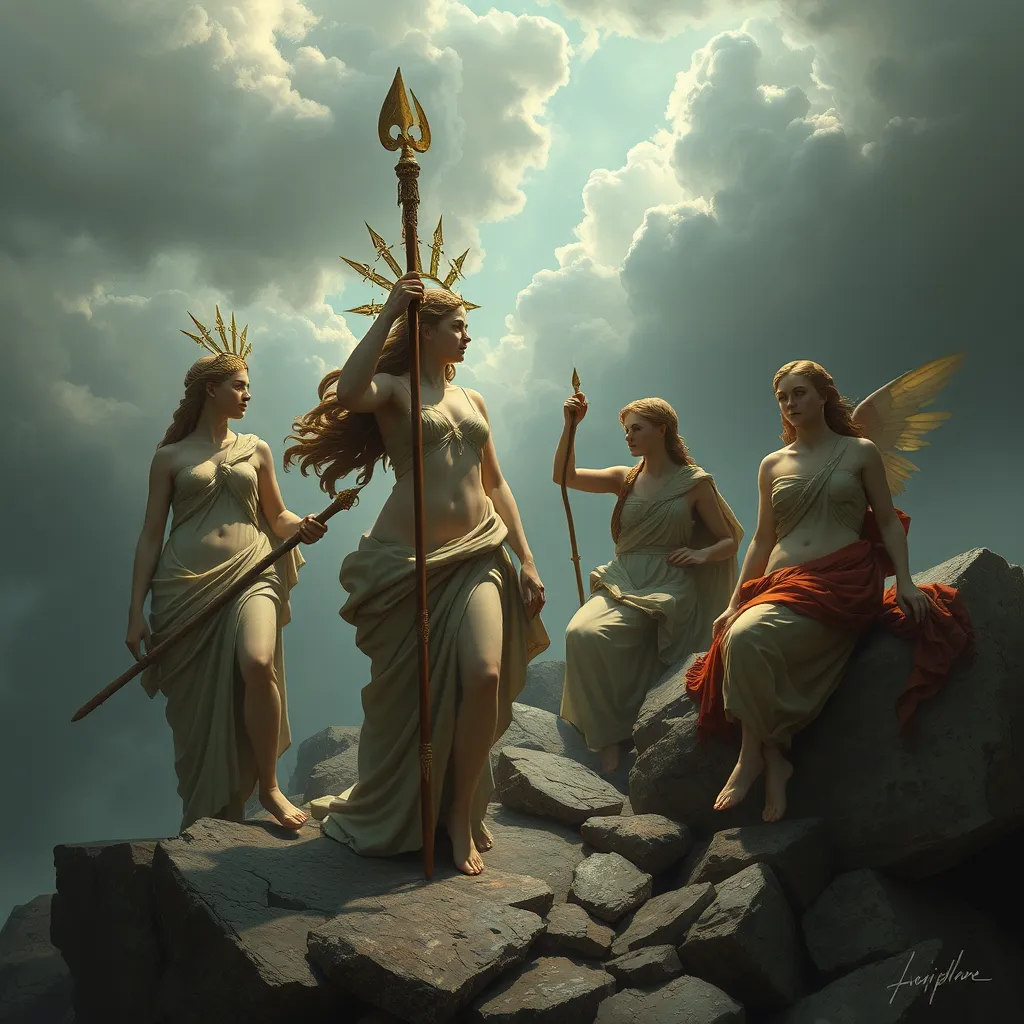The Sirens of Virgil: Exploring their Role in the Aeneid and Roman Epic Poetry
I. Introduction
The Aeneid, composed by the Roman poet Virgil in the first century BCE, is a cornerstone of Roman literature and a seminal work in the study of epic poetry. This epic poem narrates the journey of Aeneas, a Trojan hero, as he travels to Italy to found a new city that will eventually become Rome. Within this grand narrative, the Sirens emerge as a pivotal element, embodying the themes of temptation and danger that are central to Aeneas’ journey.
The Sirens hold a significant place in ancient mythology, known for their irresistible songs that lure sailors to their doom. This article aims to analyze the role of the Sirens in the Aeneid, exploring their impact on the narrative and their broader implications in the context of Roman epic poetry.
II. The Mythological Background of the Sirens
The origins of the Sirens can be traced back to Greek mythology, where they were often depicted as beautiful maidens, sometimes described as half-bird, half-woman creatures. Their enchanting voices were said to captivate anyone who heard them, leading sailors to shipwreck on the rocky shores where they resided.
In literature, the Sirens symbolize fate and temptation, representing the struggles that individuals face when confronted with alluring distractions. Their songs are not merely beautiful; they carry a deeper meaning, often associated with the loss of agency and the surrender to fate.
III. The Appearance of the Sirens in the Aeneid
The Sirens make their appearance in Book 12 of the Aeneid, during Aeneas’ journey as he and his crew navigate treacherous waters. As they approach the Sirens’ territory, the atmosphere becomes tense with foreboding, highlighting the dangers that lie ahead.
Key passages describe the Sirens’ alluring songs that promise knowledge and fulfillment, creating a powerful moment of conflict for Aeneas and his men. The crew is tempted to abandon their quest, drawn by the enchanting melodies that speak to their deepest desires.
IV. Symbolism of the Sirens in the Aeneid
The Sirens serve as potent symbols of distraction and danger in the Aeneid. They embody the duality of desire and duty, presenting a challenge to Aeneas, who must resist the temptation to stray from his destined path. This conflict is central to Aeneas’ character development, as he grapples with the responsibilities of leadership against the allure of momentary pleasure.
Furthermore, the Sirens can be interpreted as a metaphor for the temptations that individuals encounter throughout life. Their enchanting songs represent the seductive nature of distractions that can lead one away from their goals and responsibilities.
V. Comparison with Other Roman Epic Poetry
In comparing the portrayal of Sirens in other Roman epic poetry, such as works by Ovid and Lucan, we can observe both similarities and differences. While Ovid often presents the Sirens in a more playful or romantic light, Lucan’s depiction leans toward the darker aspects of their nature.
The influence of Greek traditions on Roman epic poetry is evident in how these poets interpret the Siren motif. The evolution of the Siren narrative reflects changing cultural values and storytelling techniques, showcasing the Sirens as enduring figures in literature.
VI. Literary Techniques Used in the Depiction of the Sirens
Virgil employs various literary techniques to enhance the depiction of the Sirens in the Aeneid. The use of vivid imagery and sensory language brings the Sirens to life, allowing readers to experience the allure of their songs. For instance, descriptions of the Sirens’ voices evoke a sense of wonder and danger, creating a palpable tension in the narrative.
Additionally, Virgil uses foreshadowing and tension in the scenes featuring the Sirens. The anticipation of Aeneas’ encounter with these mythical beings underscores the stakes of his journey. Through careful stylistic choices, Virgil crafts a compelling portrayal that resonates deeply with themes of fate and temptation.
VII. Thematic Implications of the Siren Episode
The Siren episode in the Aeneid explores themes such as heroism, temptation, and perseverance. Aeneas’ struggle against the Sirens’ enchantment reflects the broader human experience of resisting distractions in pursuit of one’s goals. This tension between desire and duty becomes a defining aspect of Aeneas’ character, emphasizing his role as a hero.
Moreover, the relationship between the Sirens and the concept of fate is significant. The Sirens represent the challenges that can divert one from their predetermined path, highlighting the importance of self-control and commitment to destiny in the face of temptation.
Ultimately, the Sirens contribute to the epic’s overarching message about the trials of leadership and the necessity of steadfastness in the pursuit of one’s purpose.
VIII. Conclusion
In summary, the Sirens in the Aeneid play a crucial role in illustrating the themes of temptation, duty, and the struggle against distraction. Their presence enriches the narrative, providing insight into Aeneas’ character and the challenges he faces on his journey. The enduring legacy of the Sirens in Roman epic poetry continues to inspire exploration of mythological figures in literature.
As we reflect on the significance of the Sirens, we are invited to delve deeper into the world of ancient mythology and its profound influence on storytelling throughout history.




